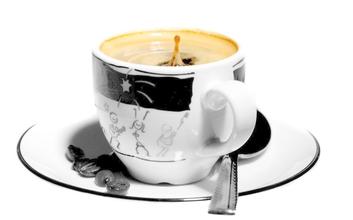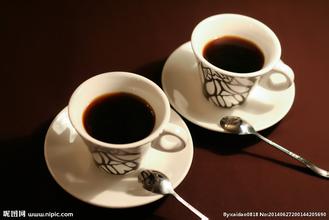Flavor description of Arabica espresso beans introduction to the region of manor production
Flavor description of Arabica espresso beans introduction to the region of manor production
Arabica coffee trees grow between 900m and 2000 m above sea level; they are cold-resistant, and the suitable growth temperature is 15ml / 24m; they need more humidity, annual rainfall is not less than 1500 ml, and higher requirements for cultivation techniques and conditions are also required.
Arabica coffee beans are mainly grown in South America (except Argentina and parts of Brazil), Central American countries, Africa (Kenya, Ethiopia, etc.), Asia (including parts of Yemen, India and Papua New Guinea), and a small amount of Arabica coffee beans are also grown in Yunnan, Hainan and Taiwan in China.
Although Arabica has been grown commercially in many countries, wild Arabica grows only in the highlands of southern Ethiopia and a small number of areas of neighboring South Sudan.
High-quality Arabica coffee requires a cumbersome process of hand picking, selection and fine processing, so the world's most expensive and best coffee beans are Arabica coffee. "Robusta" coffee is usually used to produce instant coffee and canned coffee because of its low cost. A small number of better quality "Robusta" coffee are also used in mixed coffee (with Arabica coffee) espresso beans.
Other differences
There is another important difference: the amount of "Caffeine" (C8H10N4O2). Robusta coffee contains about twice as much caffeine as Arabica coffee, which is why drinking some canned coffee is prone to palpitations and insomnia.
After seeing so many differences between Arabica Coffee and Robusta Coffee, we must finally emphasize:
"Arabica coffee" is not the same as "good coffee", "Robusta" is not absolutely cheap coffee!
Arabica coffee accounts for 75% of the world's coffee production, and its quality varies widely, from good to bad. In recent years, a few countries (such as India) have devoted themselves to improving the quality of robusta coffee. They have planted robusta in high altitude areas, given the most careful care, and carefully washed the coffee. As a result, they get very good quality robusta coffee beans! Top Robusta beans are not cheap either, getting rid of the old impression that Robusta are cheap beans! Therefore, the quality of coffee beans can no longer be judged by the crude and outdated ancient judgment standard of "is it Arabica beans"?

Important Notice :
前街咖啡 FrontStreet Coffee has moved to new addredd:
FrontStreet Coffee Address: 315,Donghua East Road,GuangZhou
Tel:020 38364473
- Prev

Video introduction of points for attention in the production of espresso
Espresso production precautions Video introduction remember that in the standard coffee making process, water must flow evenly through coffee powder driven by pressure, so as to ensure the full fusion of water and coffee powder. If the water flow bifurcates, it means that the contact between the water and the coffee powder is not enough, and the water flows from the place where the coffee powder is least. Want to test whether the coffee extraction is uniform.
- Next

Percentage of coffee brewed-manual coffee making tutorial
Proportion of Coffee making-handmade Coffee making tutorial although Porlex's bean grinding ability is already very excellent in the hand machine, according to my personal test, if it is the amount of a cup of coffee, about 15 grams of coffee beans, it takes 60 laps to grind a relatively coarse powder and 100 laps to a relatively fine powder. If it is filled and ground once, it will only be enough for 1 to 1.5 people. Without a certain amount of patience and arm strength.
Related
- Beginners will see the "Coffee pull flower" guide!
- What is the difference between ice blog purified milk and ordinary milk coffee?
- Why is the Philippines the largest producer of crops in Liberia?
- For coffee extraction, should the fine powder be retained?
- How does extracted espresso fill pressed powder? How much strength does it take to press the powder?
- How to make jasmine cold extract coffee? Is the jasmine + latte good?
- Will this little toy really make the coffee taste better? How does Lily Drip affect coffee extraction?
- Will the action of slapping the filter cup also affect coffee extraction?
- What's the difference between powder-to-water ratio and powder-to-liquid ratio?
- What is the Ethiopian local species? What does it have to do with Heirloom native species?

